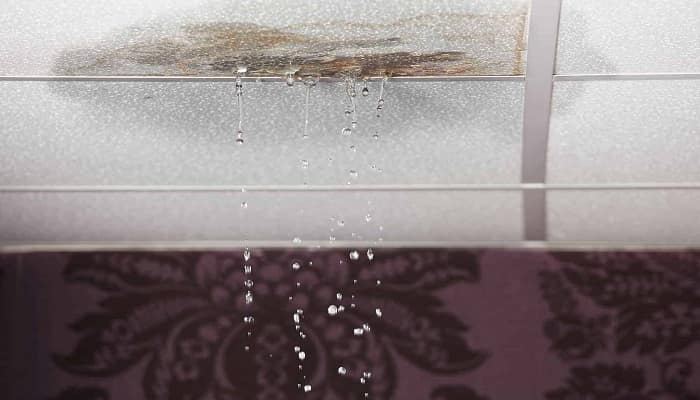If you have noticed water damage on your bathroom ceiling, it is important to take action and fix the problem as soon as possible. The longer the water damage goes untreated, the more likely it is that the underlying drywall will suffer permanent damage. There are several things you can do to fix it. In this blog post, we will teach you how to repair a water-damaged bathroom ceiling using some simple techniques. We will also offer some tips on how to prevent future water damage in your bathroom. So if you’re ready, let’s get started!
Identify The Source Of The Leak
When you notice water damage on your bathroom ceiling, the first step is to identify the source of the leak. This can be difficult, as leaks can often travel through walls and ceilings before they become visible.
However, there are a few telltale signs that can help you track down the source of the leak. For example, if the water damage is concentrated around a light fixture or vent, then the issue is likely with the plumbing in those areas.
If the water damage is spread out more evenly, then the issue is likely with the roof. Once you have identified the source of the leak, you can begin to take steps to repair the damage and prevent future issues. Drywall is the most commonly used bathroom ceiling material and it is relatively easy to repair.
However, if the leak has caused significant damage, then it may be necessary to replace the entire section of the ceiling. In either case, it is important to fix the underlying issue before repairing the ceiling, or else you may find yourself dealing with water damage again in the future.
Dry The Ceiling
Drying the ceiling is the second step in fixing water damage. Ceilings are usually made of plaster or drywall, which can absorb a lot of water. To dry the ceiling, remove any wet materials such as insulation or Sheetrock.
Then, use a fan to circulate air around the room and help dry the ceiling. You may also need to open windows or use a dehumidifier to speed up the drying process. Once the ceiling is dry, you can begin repairing the damage.
It is important to dry the ceiling before repairing it because otherwise, the repair will not last long. If you try to repair a wet ceiling, the repair will likely be mold or mildew and will need to be replaced soon. So, drying the ceiling is an important step in fixing water damage.
Fix The Damage
Once the ceiling is dry, it’s time to start fixing the water damage. Depending on the extent of the damage, this may involve patching holes, repairing cracks, or replacing damaged drywall. If the damage is severe, it may be necessary to replace the entire section of the ceiling.
First, you’ll need to determine the extent of the damage. If the ceiling is sagging or if there are any large cracks, you’ll need to consult a professional. However, if the damage is limited to small stains or discoloration, you can probably tackle the repair yourself.
If there are any holes or cracks in your ceiling, then you will need to patch them up before proceeding with any other repairs. Use spackling compound to fill in these holes and cracks so that they are smooth again, but make sure that you do not use too much compound, or else it may drip down onto other areas of your ceiling when it dries out.
Let this dry completely before continuing to paint over it. You can apply several layers if necessary until you have a smooth surface again.
Seal And Paint
Sealing the repair with paint is the last step in fixing water damage on ceilings. This finalizes the repair, making it less likely for mold or mildew to return and protecting the drywall from further moisture. First, any loose paint or wallpaper must be scraped away.
Next, the area must be sanded smooth to allow the paint to adhere properly. Once the repair is dry, a primer should be applied before painting. For best results, use a semi-gloss or high-gloss paint, as these will stand up better to moisture.
Finally, apply two coats of paint to ensure even coverage. Allow each coat to dry completely before adding the next. With proper care and attention, your repaired ceiling should last for many years to come.
Water damage can be a big headache to deal with, but if you take the necessary steps, you can fix it yourself without too much trouble. We hope this blog has helped give you a better idea of what needs to be done in order to address water damage on your bathroom ceiling.




































